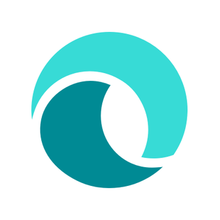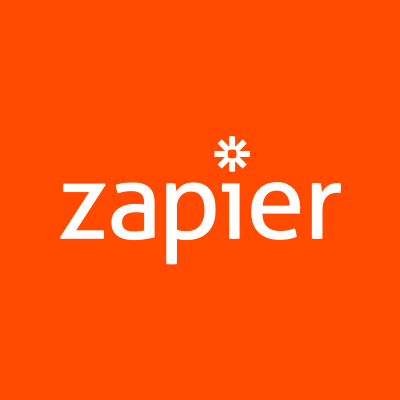
We Built A $12K/Year App That Monitors the Stock Market
Hello! Who are you and what business did you start?
Hello! I’m Ramsey Shaffer, I am the founder of Uptrends.ai. We’re an AI-powered news monitoring and event detection platform for finance professionals.
We launched as a side hustle about 3 years ago with the goal of helping stock market investors keep tabs on market-moving trends and events more easily. Today we’re doing about $1,500/mo.
With Uptrends you can create highly-personalized daily/weekly news reports in seconds with the help of AI. Just choose your companies or investment themes, select the types of news and sources you care about (anything from earnings, bankruptcy rumors to Elon Musks’s commentary), customize the format, then boom – 1 email to handle all your due diligence.

How did you come up with your business idea?
Uptrends started as a college project. My cofounder and I were in a quantitative trading club, we wrote some models to trade Bitcoin based on Twitter/Reddit sentiment. I used it to sell all my Bitcoin for a 200% profit in 2019 when it was around $10,000 per coin, I thought I was a genius (turns out I wasn’t).
Here’s my cofounder Sam with our first outlines of Uptrends:

The core idea behind Uptrends has remained the same: online chatter impacts stock prices, which means if you can efficiently find and act on the right chatter, you can make money.
The problem for investors is that there’s millions of news stories, filings, and financial data sources to keep tabs on. The average investor or financial professional looks at hundreds of tweets, articles, emails, and reports every week and can’t scratch the surface – it’s an intractable problem to stay fully on top of what’s going on in the market at all times as an individual.
This is a huge industry. Hedge funds and finance news outlets are worth billions. But we knew in theory that if we could tackle the right niche and create a novel product that solves a meaningful problem that we – and anyone else – could build a sustainable business.
Give us a step-by-step process for how you built the first version of your product.
A while after graduating into COVID and getting stuffy consulting jobs, my cofounder and I decided to try and turn that code we wrote in college into a website for other retail investors. In hindsight the concept was incredibly simple: it was a live table of trending stocks in online news coverage, which you could click into to see sentiment over time.
We bootstrapped it to start with about $10,000 of our own savings, putting together a basic MVP without ANY clue what we were doing in terms of development, marketing, design, etc. We knew enough about writing code, but even just a few years ago the tools and resources available to launch a website from scratch with 0 experience were extremely limited compared to today.
We ultimately paid a junior front-end developer from AngelList to build the interface (off of some designs I put together in PowerPoint !!). The first version literally took us over 6 months to build; in large part because we had no clue what we were building and no users to validate it. Looking back you could probably have done it in an afternoon now with the right tools and experience (and some help from AI).
We probably made every single Cardinal Sin of starting a business when we started – we overbuilt, ignored customer feedback, didn’t build distribution, took too long to pivot, and didn’t charge enough money.
How did you “launch” the business?
Then finally, after 6 months of overbuilding, we launched our MVP. We had gathered a waitlist of a few hundred people by posting on Twitter and scrounging at local startup community events. Over the next few months we used organic channels like Twitter, LinkedIn, Substack, and Discord to grow our user base.
4 months in and a few thousand people had signed up, which was an incredible feeling. We’d gone from no-clue to a real-world business. We were able to parlay the MVP into a fundraising round from friends/family/angel investors. That enabled us to bring on a full-time developer and a marketing budget.
From MVP to building the full product was another ~9 months. Uptrends officially launched in February 2024 as a consumer subscription. It still enabled users to track trending stocks and see sentiment over time, plus the additional feature of being able to set alerts and get notifications about major events via email – which we didn’t think much about it at the time, but that functionality would ultimately become the entire product (foreshadowing).
After another 3 months we got to 20,000 users – continuing to grow through organic channels, with some help from paid channels like Google Ads and influencer marketing. But even though we were growing, ultimately we couldn’t get many users to pay us. We iterated on various features, onboarding, acquisition strategies for months, and eventually came to the frustrating realization that there just wasn’t enough product-market fit with consumers to be sustainable. It was a vitamin not a painkiller. It sucked.
But there was a silver lining. Of the few users who \did\ create paid accounts, most turned out to be finance professionals – advisors, analysts, portfolio managers, etc. So we figured it might be worth pivoting towards B2B, and just about 6 weeks ago we took the leap. That’s when everything changed for the better.
How did you land your first customers?
We went out and interviewed a dozen finance professionals, asked them about their biggest day-to-day pain-points, took down their feedback, and outlined a handful of potential products that we could build.
The most popular idea was unanimous: a customizable, AI-generated news report. And it makes sense…Everyone in finance gets a million emails and reports per week, but there’s way too much noise – these people wanted ONE email that summarized EXACTLY what they needed to know and NOTHING ELSE.
So we created some mockups of a report based on the direct feedback we received from our ideal customers, demoed them, got money *upfront* before building, and went to work.
To be clear, all of this happened before writing a single line of code. That was the most important learning – that if a product is important enough, your end user will pay for it upfront, for the mere prospect of having their problem solved.
How have you grown your business?

Before pivoting away from B2C we tried pretty much every growth tactic in the books. Content marketing on social media, SEO, newsletters, cold email, events, creators/influencers, paid ads, partnerships. Agencies, contractors, employees.
Overall, the most effective, reliable strategies for us turned out to be three things: 1) organic search, 2) Meta advertisements, and 3) email marketing, in that order.
Organic search is something that we prioritized somewhat recently, and it’s had the biggest impact by far. Everyone online for the past few years has been saying that SEO is dead, but for us it’s been great. Two SEO investments have really helped us: taking Pat’s Lean SEO Course through StarterStory (content), and getting featured on as many AI/startup directories as possible with high authority (backlinks). My favorite SEO tools have been SearchAtlas and Keywords Everywhere.
Meta Ads took us a while to crack, but now they are by far our most cost effective marketing spend. Compared to other ad platforms it has the best mix of distribution and ease-of-use by far in my opinion. We’ve had success with retargeting campaigns that focus on lookalike audiences of our current subscribers, focused on simple videos and memes explaining how our product works (you can use Meta’s public ad library to literally find the exact ad creative your competitors are using and just replicate it). From there Meta’s system just optimizes the rest so you can end up getting crazy $CPC below like $0.03 in some scenarios
Our most success has actually been running Meta Ads not directly to our web-app, but to our newsletter (aka Email Marketing). Our newsletter summarizes the top trending stocks from our web-app each week, in a simple, easy to read format. We run ads here instead of our app because it’s just a lower friction way to get people to sign up, from there we’re in their inbox every week adding value and building a case for the reader to want to create an Uptrends account. This improves our odds immensely vs. sending them straight to our platform.
Competitive advantage is simply stringing together enough failures to build a moat that’s too big for anyone else to cross. In that way even a year of failures is progress, because it’s evidence of where not to go, and that is something you can use to your advantage.
Give us a breakdown of your revenue & financials.
Over the past 6 months with our B2C model we brought in an average of $1,000 per month. Which was a fine side hustle, but not scalable. More recently since switching to a B2B model we are now closer to $2,500 in just the first month, by only adding a handful of clients.
Importantly, towards the end of our consumer-focused era, we were spending like crazy – payroll, ads, cloud compute, etc. We were running out of runway, which forced us to get scrappy. We’ve managed to cut our monthly burn from $30K to more like $6K over the past two months, and most of that is just cloud compute and contractor expenses.
What does the future look like?
Ultimately the business has evolved more over the past 30 days than it did through our first 3 years. When we started I think we were stuck in the ‘VC’ mindset for months – spend at all costs, grow at all costs, fly towards the Sun like Icarus. But without finding success with our original model we had to evolve, and now our business is much more like an IndieHacker mindset – avoid spending at all costs, only build what you need, validate and get paid up front, sell B2B.
This new ideology has felt like rolling the ball downhill compared to before, and I am very excited to continue down this path. My number one goal within the next two months is getting to ramen profitability – having just enough monthly revenue to cover all our monthly expenses. We are on track to get there this year. And with our first few paid business pilots in the door, the objective is to essentially replicate for new business prospects through a combination of SEO, paid ads, and email marketing.
Through starting the business, have you learned anything particularly helpful or advantageous?
We probably made every single Cardinal Sin of starting a business when we started – we overbuilt, ignored customer feedback, didn’t build distribution, took too long to pivot, and didn’t charge enough money. We were first time founders, we didn’t know any better.
But the beautiful part is…despite all of the missteps, we are still going. And now we are actually building momentum and on track to become profitable this year. We are spending 5x less and making 2.5x more in just our first 2 months since pivoting. And the only way to get their is to combine learnings + luck. Maybe we haven’t been very lucky so far, but we’ve learned A LOT.
One of the most important things I’ve learned is how to build for sustainable PMF. It’s simple:
→ Find customer
→ Identify Their #1 problem
→ Outline Solution
→ Ask for Money Upfront
→ Build It
→ Iterate Until PMF
And perhaps even more importantly, I learned how to fail, how to create habits for success, how to focus, and how to reason. More than I probably ever could have within a 9-5 job or a MBA program.
Advice for other entrepreneurs who want to get started or are just starting out?
Stick with it. One of my favorite perspectives was from a founder friend who had spent a lot more time than I have building a business (which is now worth 6-figures in ARR). It’s this:
Competitive advantage is simply stringing together enough failures to build a moat that’s too big for anyone else to cross. In that way even a year of failures is progress, because it’s evidence of where not to go, and that is something you can use to your advantage.
With building a startup, failure is inevitable. It’s one of the most humbling experiences you can inflict upon yourself. But if you simply gradient descent from your initial state to a better state enough times in a row (which can take months, years) then you are guaranteed to succeed.
Where can we go to learn more?
If you have any questions or comments, drop a comment below!

Download the report and join our email newsletter packed with business ideas and money-making opportunities, backed by real-life case studies.

Download the report and join our email newsletter packed with business ideas and money-making opportunities, backed by real-life case studies.

Download the report and join our email newsletter packed with business ideas and money-making opportunities, backed by real-life case studies.

Download the report and join our email newsletter packed with business ideas and money-making opportunities, backed by real-life case studies.

Download the report and join our email newsletter packed with business ideas and money-making opportunities, backed by real-life case studies.

Download the report and join our email newsletter packed with business ideas and money-making opportunities, backed by real-life case studies.

Download the report and join our email newsletter packed with business ideas and money-making opportunities, backed by real-life case studies.

Download the report and join our email newsletter packed with business ideas and money-making opportunities, backed by real-life case studies.




























